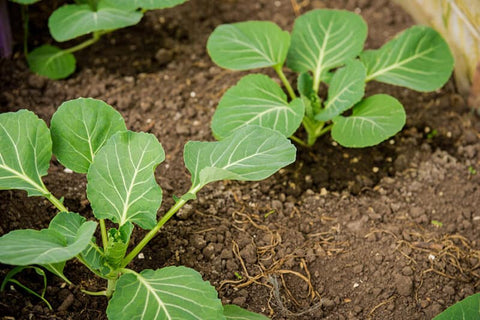In the world of gardening, vibrant colors aren't just reserved for flowers. Rainbow fruits and vegetables add a burst of color and flavor to any garden, making them a delightful addition for both visual appeal and culinary creativity. In this blog, we'll explore the beauty and benefits of growing rainbow fruits and vegetables, from their nutritional value to tips for cultivating these colorful varieties in your backyard.The following content also has some reference value for raised garden beds.
The Appeal of Rainbow Produce
Rainbow fruits and vegetables offer a feast for the senses with bright hues and enticing flavors. From the deep purple of eggplants to the sunny yellow of bell peppers, each color represents a unique combination of vitamins, minerals, and antioxidants that contribute to overall health and well-being. Incorporating a diverse array of colors into your diet not only makes meals more visually appealing but also ensures a wide range of nutrients for optimal health.
Nutritional Benefits of Rainbow Produce
Each color in the rainbow spectrum offers its own set of health benefits:
- Red: Red fruits and vegetables such as tomatoes, strawberries, and red bell peppers are rich in lycopene, a powerful antioxidant that may help reduce the risk of heart disease and certain types of cancer.
- Orange: Orange fruits and vegetables like carrots, sweet potatoes, and oranges are high in beta-carotene, which the body converts into vitamin A. Vitamin A plays an important role in maintaining good vision, supporting the immune system, and promoting healthy skin.
- Yellow: Yellow fruits and vegetables like bananas, corn, and yellow squash are rich in essential nutrients such as vitamin C and potassium. These nutrients support immune function, heart health, and overall vitality.
- Green: Green fruits and vegetables like spinach, broccoli, and kiwi are rich in chlorophyll, vitamins, and antioxidants. They support detoxification, digestion, and healthy aging.
- Blue/Purple: Blue and purple fruits and vegetables such as blueberries, grapes, and purple cabbage contain anthocyanins, powerful antioxidants that may help reduce inflammation and improve cognitive function.

Cultivating Rainbow Fruits and Vegetables
Growing rainbow fruits and vegetables in your garden is a rewarding and enjoyable experience. Here are some tips for cultivating these colorful varieties:
- Selecting Varieties: Start by selecting a variety of fruits and vegetables in different colors to create a diverse and visually stunning garden. Look for heirloom and hybrid varieties that are known for their vibrant colors and delicious flavors.
- Preparing the Soil: Ensure that your garden soil is rich in nutrients and well-draining, as healthy soil is essential for robust plant growth and abundant harvests. Consider amending the soil with compost, organic matter, and balanced fertilizer to provide essential nutrients for plant development.
- Planting and Spacing: Follow the planting instructions provided for each type of fruit and vegetable, taking into account spacing requirements, sun exposure, and water needs. Plant taller varieties towards the back of the garden and shorter varieties towards the front to maximize sunlight and airflow.
- Watering and Maintenance: Water your rainbow garden regularly, keeping the soil evenly moist but not waterlogged. Apply mulch around the plants to maintain soil moisture, prevent weed growth, and stabilize soil temperature. Keep an eye out for pests and diseases, and promptly address any problems that arise.
- Harvesting: Harvest your rainbow fruits and vegetables when they are ripe and ready to enjoy. Most fruits and vegetables will change color as they ripen, so monitor them closely and harvest them at their peak of flavor and freshness. Use a sharp knife or pruning shears to harvest fruits and vegetables without damaging the plant.

Creative Ways to Enjoy Rainbow Produce
Once you've harvested your rainbow bounty, the fun continues in the kitchen. Here are some creative ways to enjoy your colorful harvest:
- Rainbow Salads: Create vibrant salads using a variety of colorful fruits and vegetables, such as mixed greens, cherry tomatoes, bell peppers, carrots, cucumbers, and purple cabbage. Top with your favorite dressing for a healthy and delicious meal.
- Rainbow Smoothies: Blend together a rainbow of fruits and vegetables to create nutritious and refreshing smoothies. Try combinations like spinach, banana, pineapple, and blueberries for a colorful and antioxidant-rich treat.
- Rainbow Stir-Fries: Stir-fry a medley of colorful vegetables with tofu, chicken, or shrimp for a quick and flavorful meal. Add a splash of soy sauce or teriyaki sauce for extra flavor, and serve over rice or noodles.
- Rainbow Salsas: Whip up a batch of rainbow salsa using diced tomatoes, onions, peppers, corn, and black beans. Add a squeeze of lime juice and a handful of fresh cilantro for a zesty and colorful topping for tacos, nachos, or grilled meats.
- Rainbow Fruit Kabobs: Skewer a variety of colorful fruits onto bamboo skewers to create fun and festive fruit kabobs. Serve with a yogurt dip or drizzle with honey for a sweet and satisfying snack.
Conclusion
In conclusion, growing rainbow fruits and vegetables in your garden not only adds beauty and color to your landscape but also provides a wealth of nutritional benefits for you and your family. By incorporating a diverse array of colors into your diet, you can ensure a wide range of vitamins, minerals, and antioxidants for optimal health and well-being. Whether you're harvesting ripe tomatoes, crisp bell peppers, or sweet strawberries, the bounty of a rainbow garden is sure to delight your senses and inspire your culinary creativity. So roll up your sleeves, dig in the dirt, and enjoy the colorful fruits of your labor!









